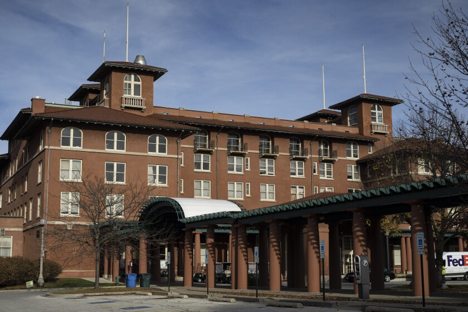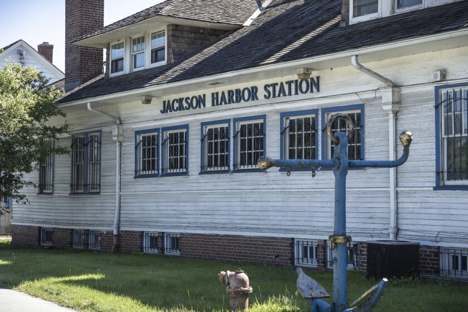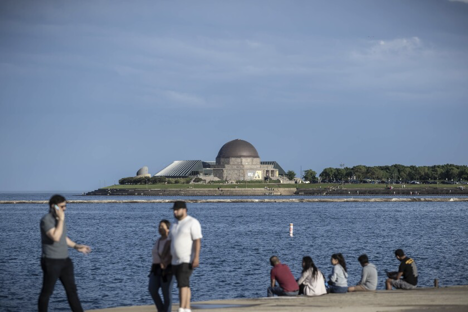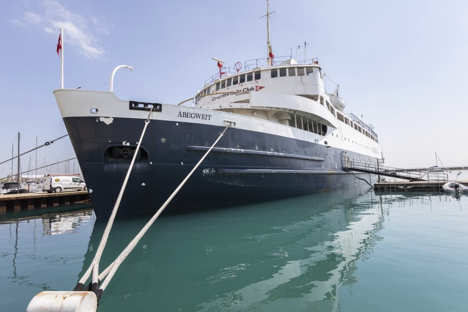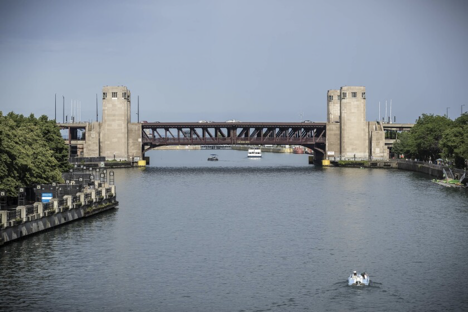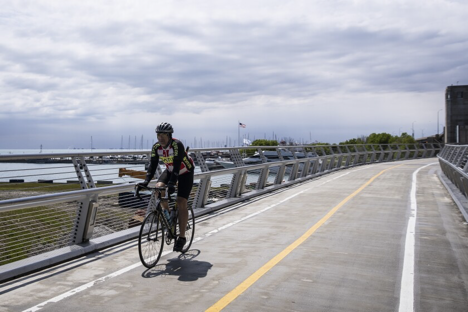From Heather Cox Richardson:
Today is the federal holiday honoring Juneteenth, the celebration of the announcement in Texas on June 19th, 1865, that enslaved Americans were free.
That announcement came as late as it did because, while General Robert E. Lee surrendered his Army of Northern Virginia to General Ulysses S. Grant of the U.S. Army on April 9, 1865, it was not until June 2 that General Edmund Kirby Smith surrendered the Trans-Mississippi Department, the last major army of the Confederacy, to the United States, in Galveston, Texas. Smith then fled to Mexico.
Seventeen days later, Major General Gordon Granger of the U.S. Army arrived to take charge of the soldiers stationed in Texas. On that day, June 19, he issued General Order Number 3. It read:
“The people of Texas are informed that, in accordance with a proclamation from the Executive of the United States, all slaves are free. This involves an absolute equality of personal rights and rights of property between former masters and slaves, and the connection heretofore existing between them becomes that between employer and hired labor.”
Granger’s order was not based on the Thirteenth Amendment to the Constitution, which abolished enslavement except as punishment for a crime. Although Congress had passed that amendment on January 31, 1865, and Lincoln had signed it on February 1, the states were still in the process of ratifying it.
Instead, Granger’s order referred to the Emancipation Proclamation of January 1, 1863, which declared that Americans enslaved in states that were in rebellion against the United States “shall be then, thenceforward, and forever free; and the Executive Government of the United States, including the military and naval authority thereof, will recognize and maintain the freedom of such persons.” Granger was informing the people of Galveston that, Texas having been in rebellion on January 1, 1863, their world had changed. The federal government would see to it that, going forward, white people and Black people would be equal.
Black people in Galveston met the news Order No. 3 brought with celebrations in the streets, but emancipation was not a gift from white Americans. Black Americans had fought for the United States and worked in the fields to grow cotton the government could sell. Those unable to leave their homes had hidden U.S. soldiers, while those who could leave indicated their support for the Confederacy and enslavement with their feet. They had demonstrated their equality and their importance to the United States.
The next year, after the Thirteenth Amendment had been added to the Constitution, Texas freedpeople gathered on June 19, 1866, to celebrate the coming of their freedom with prayers, speeches, food, and socializing. By the following year, the federal government encouraged “Juneteenth” celebrations, eager to explain to Black citizens the voting rights that had been put in place by the Military Reconstruction Act in early March 1867, and the tradition of Juneteenth began to spread to Black communities across the nation.
But white former Confederates in Texas were demoralized and angered by the changes in their circumstances. “It looked like everything worth living for was gone,” Texas cattleman Charles Goodnight later recalled.
In summer 1865, as white legislators in the states of the former Confederacy grudgingly ratified the Thirteenth Amendment, they also passed laws to keep freedpeople subservient to their white neighbors. These laws, known as the Black Codes, varied by state, but they generally bound Black Americans to yearlong contracts working in fields owned by white men; prohibited Black people from meeting in groups, owning guns or property, or testifying in court; outlawed interracial marriage; and permitted white men to buy out the jail terms of Black people convicted of a wide swath of petty crimes, and then to force those former prisoners into labor to pay off their debt.
At the same time, those determined to preserve their power began to rewrite the history of the Civil War. The war had irrevocably undermined the institution of enslavement in the American South, moving it far beyond the ability of white southerners to reinstate it (although some historians argue that without the Thirteenth Amendment enslavement might have moved into the western mines). So white supremacists began to claim that secession had never been about slavery, despite the many declarations of secession saying the opposite. With the Freedmen’s Bureau, created by Congress in March 1865, defending the rights of Black Americans, certain white southerners began to claim that their “cause” had been to protect the rights of the states against a powerful federal government that was forcing on them a way of life they opposed.
In the 1820s, before he became president, Andrew Jackson argued that true democracy meant honoring the votes of those in the states rather than laws made by Congress. This idea justified minority rule. Under this argument, a state’s voters could choose to take the land of their Indigenous neighbors or enslave their Black neighbors even if the majority of Americans, speaking through Congress, opposed those policies, because what mattered was the local vote. Crucially, states also decided who could participate in voting, and before the Civil War, the body politic was almost exclusively white men.
The Black Codes were a clear illustration of what that system meant. Congress refused to readmit the southern states with the codes, and in 1866, congressmen wrote and passed the Fourteenth Amendment to the Constitution. Its first section established that “All persons born or naturalized in the United States, and subject to the jurisdiction thereof, are citizens of the United States and of the State wherein they reside.” It went on: “No State shall make or enforce any law which shall abridge the privileges or immunities of citizens of the United States; nor shall any State deprive any person of life, liberty, or property, without due process of law; nor deny to any person within its jurisdiction the equal protection of the laws.”
That was the whole ball game. The federal government had declared that a state legislature—no matter who elected it or what voters called for—could not discriminate against any of its citizens or arbitrarily take away any of a citizen’s rights. Then, like the Thirteenth Amendment before it, the Fourteenth declared that “Congress shall have the power to enforce, by appropriate legislation, the provisions of this article,” strengthening the federal government.
The addition of the Fourteenth Amendment to the Constitution in 1868 remade the United States of America.
But those determined to preserve a world that discriminated between Americans according to race, gender, ability, and so on, continued to find workarounds. Key to those workarounds has always been resurrecting the idea that true democracy means reducing the power of the federal government and centering the power of the state governments, where voters—registered according to state laws—can choose the policies they prefer…even if they are discriminatory.
In our era, those discriminatory policies are not just racial. They often center religion and include attacks on women’s healthcare and right to abortion, LGBTQ+ Americans, immigrants, and non-Christians. Just today, Louisiana governor Jeff Landry signed into law a measure requiring that every classroom in Louisiana public schools display the Ten Commandments. Those embracing the law hope to push the question of public displays of their faith to the Supreme Court, where they expect a warmer reception from this court than such discriminatory positions have gotten since the 1950s.
If states get to determine who votes and can pass discriminatory legislation without interference by the federal government, they can construct the kind of world Americans lived in before the Fourteenth Amendment. As several Republican-dominated states have already demonstrated, they can also rewrite history.
In 1865, Juneteenth was a celebration of freedom and the war’s end. In 1866 it was a celebration of the enshrinement of freedom in the U.S. Constitution after the Thirteenth Amendment had been ratified. In 1867, Juneteenth was a celebration of the freedom of Black men to vote, the very real power of having a say in the government under which they lived.
In a celebration of Juneteenth on June 10, 2024, Vice President Kamala Harris noted: “Across our nation, we witness a full-on attack on hard-fought, hard-won freedoms and rights, including the freedom of a woman to make decisions about her own body; the freedom to be who you are and love who you love openly and with pride; the freedom from fear of bigotry and hate; the freedom to learn and acknowledge our nation’s true and full history; and the freedom that unlocks all others: the freedom to vote.”
Notes:
https://www.nytimes.com/2024/
06/19/us/louisiana-ten- commandments-classrooms.html https://www.archives.gov/news/
articles/juneteenth-original- document J. Evetts Haley, Charles Goodnight: Cowman and Plainsman (1949; rpt. University of Oklahoma Press, 1981).
https://www.archives.gov/
milestone-documents/13th- amendment https://www.archives.gov/
milestone-documents/14th- amendment https://avalon.law.yale.edu/
19th_century/csa_scarsec.asp https://www.tshaonline.org/
handbook/entries/juneteenth https://www.tsl.texas.gov/ref/
abouttx/juneteenth https://www.archives.gov/
exhibits/featured-documents/ emancipation-proclamation/ transcript.html




